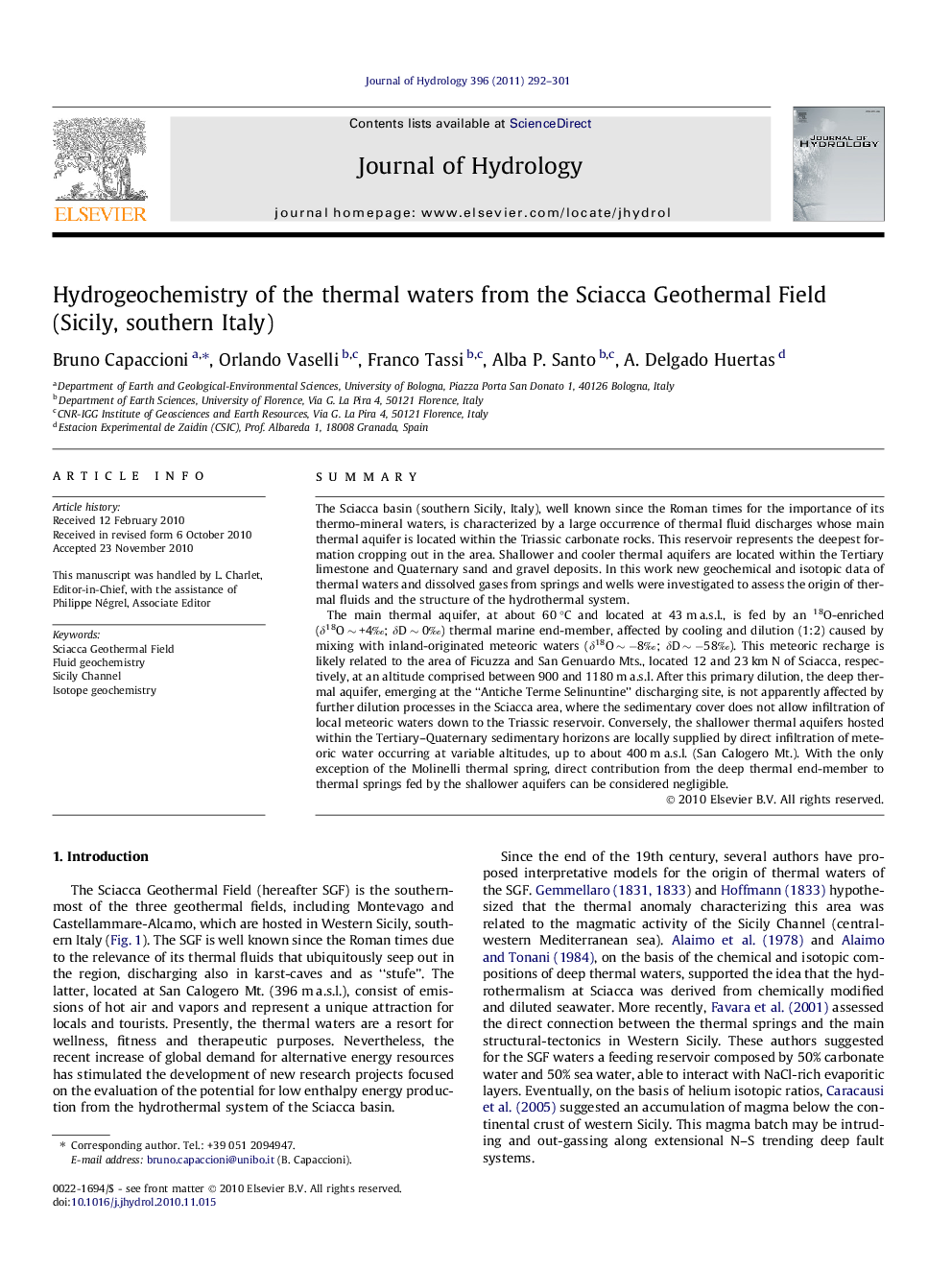| کد مقاله | کد نشریه | سال انتشار | مقاله انگلیسی | نسخه تمام متن |
|---|---|---|---|---|
| 4577893 | 1630035 | 2011 | 10 صفحه PDF | دانلود رایگان |

SummaryThe Sciacca basin (southern Sicily, Italy), well known since the Roman times for the importance of its thermo-mineral waters, is characterized by a large occurrence of thermal fluid discharges whose main thermal aquifer is located within the Triassic carbonate rocks. This reservoir represents the deepest formation cropping out in the area. Shallower and cooler thermal aquifers are located within the Tertiary limestone and Quaternary sand and gravel deposits. In this work new geochemical and isotopic data of thermal waters and dissolved gases from springs and wells were investigated to assess the origin of thermal fluids and the structure of the hydrothermal system.The main thermal aquifer, at about 60 °C and located at 43 m a.s.l., is fed by an 18O-enriched (δ18O ∼ +4‰; δD ∼ 0‰) thermal marine end-member, affected by cooling and dilution (1:2) caused by mixing with inland-originated meteoric waters (δ18O ∼ −8‰; δD ∼ −58‰). This meteoric recharge is likely related to the area of Ficuzza and San Genuardo Mts., located 12 and 23 km N of Sciacca, respectively, at an altitude comprised between 900 and 1180 m a.s.l. After this primary dilution, the deep thermal aquifer, emerging at the “Antiche Terme Selinuntine” discharging site, is not apparently affected by further dilution processes in the Sciacca area, where the sedimentary cover does not allow infiltration of local meteoric waters down to the Triassic reservoir. Conversely, the shallower thermal aquifers hosted within the Tertiary–Quaternary sedimentary horizons are locally supplied by direct infiltration of meteoric water occurring at variable altitudes, up to about 400 m a.s.l. (San Calogero Mt.). With the only exception of the Molinelli thermal spring, direct contribution from the deep thermal end-member to thermal springs fed by the shallower aquifers can be considered negligible.
Research highlights
► New geochemical data on thermal waters from Sciacca basin (Sicily) are provided.
► Thermal waters from Sciacca are fed by isotopically modified seawater at >150 °C.
► The main thermal aquifer results from a binary mixing with cool meteoric water.
► The measured high 3He/4He values are related to an upwards migration of deep fluids.
► A deep, medium to high enthalpy geothermal system could exist at depth.
Journal: Journal of Hydrology - Volume 396, Issues 3–4, 13 January 2011, Pages 292–301